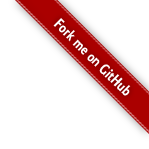Federated networks are the future for social networks. Realistically, nobody is going to come along any time soon to challenge the big players like Facebook. But what we can do is allow users to move themselves and their data seamlessly between niche networks, or better yet provide a way of linking up users and data between networks.
There are technologies around that are all working on bits of the puzzle; OpenID, OAuth etc. I think OpenDD solves a key part of the problem by providing a way to link between and move arbitrary data about in a generic and easily understandable way.
In my last post I illustrated the syndication usecase for OpenDD; how you can subscribe to a feed for a user and get a list of their activity in the form of a river. One important thing that I forgot to mention of course is there is absolutely no reason why you couldn’t use the same technique to subscribe to and receive updates about any resource.
Another powerful use case for OpenDD is its use in a live push context, and that is what I’m going to write a bit about today. Now we have already touched on the fact that OpenDD components are all atomic; they do not require a great deal of context or state around them, so for example if you establish a relationship between two entities you do not need to include the complete description of the entities in question – just the relationship.
In the latest specifications I have introduced the concept of being able to unset and remove things, so as well as creating a relationship it is also possible to remove it. This turns OpenDD into quite a powerful tool in your arsenal.
If you take Elgg as an example, Elgg has an events system which we have touched on in previous articles and as well as providing a syndication of an events log in the form of a river, we can also look at pushing those events as they happen out to interesting parties as a sequence of OpenDD components.
So, for example, you could request to be notified when a user joins a group or when something changes on a file (or indeed any other resource) and this can then be pushed out to you in a way that is simple to understand – and again, because we have the concept of an UUID, it isn’t necessary to have the complete context in order for the message to be useful. Everything else can be worked out.
So, using OpenDD, it is now possible to subscribe to users and resources on different networks and receive a feed of updates, but it is also now possible to push messages between networks in an open way that is understood by both platforms.
One of the cool things you can do with that is for example Sharing. In one network you could create a resource, for example a photo of you at a party or a URL you were interested in. Then you could select between the friends on the network you are in but also from friends elsewhere to share the resource with.
The user on the foreign network would then receive an OpenDD push update message saying that you have created a resource and have shared it with them (or rather the platform would receive and interpret it), and because users and the resource are all addressed by UUID the user would be able to see this seamlessly on their own network.
